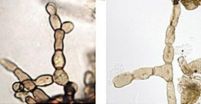(Press-News.org) LEXINGTON, Ky. (August 1, 2011) — A groundbreaking new study published in the journal, Health Affairs, suggests that increases in public health spending result in healthier people, especially in communities with fewer resources.
The study was co-authored by Glen P. Mays, the new F. Douglas Scutchfield Endowed Professor in Health Services and Systems Research at the University of Kentucky College of Public Health. At UK, Mays is affiliated with the National Coordinating Center for Public Health Services and Systems Research, funded by the Robert Wood Johnson Foundation. Sharla A. Smith, a research associate in the Department of Health Policy and Management, University of Arkansas for Medical Sciences, co-authored the study.
The study examined whether changes in spending by local public health agencies over a 13-year period contributed to changes in rates of community mortality from preventable causes of death, including infant mortality and deaths due to cardiovascular disease, diabetes and cancer.
The researchers found for every 10 percent increase in local public health spending, mortality rates from the four causes of death analyzed dropped anywhere from 1 percent to almost 7 percent.
"In light of the Affordable Care Act that authorized the largest expansion in federal public health spending in decades, coupled with an economic downturn that has precipitated large cuts in state and local government support for public health activities, it's critical to take a data-driven look at whether public health spending translates to improved health of our population," Mays said.
It's important to examine not only how much was spent, but also how it was spent, Mays said. "Our findings suggest that a connection between spending and health outcomes does exist, although it's important to note that resources must be successfully aimed at activities that target at-risk population groups to ensure that spending is resulting in positive outcomes."
Previously, little research has been done in the area of the impact of public health spending on population health. Mays and Smith analyzed changes in spending patterns and mortality rates within the service areas of the nation's nearly 3,000 local public health agencies over a 13-year period.
Increases in public health spending were associated most significantly with reductions in deaths for four of the six mortality rates, with the strongest effects for infant mortality and cardiovascular disease mortality.
After accounting for differences in demographic and socioeconomic characteristics, medical resources and other factors, communities that made the largest investments in public health spending experienced the most significant reductions in mortality from leading preventable causes of death.
"Although a definitive causal link between spending and mortality cannot be drawn, the study does provide compelling evidence that communities must pay attention to more than local medical resources and interventions, but also to the resources invested in local public health activities to truly make a difference in the health of their people," Mays said.
Public health spending varies widely around the country. For example, per capita state public health spending ranged from a low of less than $4 in Nevada to a high of more than $171 in Hawaii. Local public health spending varied even more significantly – ranging from less than $1 per capita to more than $200 per capita, with the median spent around $36 per person.
The study provides a foundation for further research, particularly in light of the ACA investment of a projected $15 billion in new spending over 10 years in federal public health spending and the continued reductions in state and local government spending for public health, Mays said.
###
The research was supported by a grant from the Robert Wood Johnson Foundation.
For the complete article: http://content.healthaffairs.org/content/early/2011/07/19/hlthaff.2011.0196.abstract
For more information about the National Coordinating Center for Public Health Services and Systems Research: www.publichealthsystems.org
Study suggests increase in public health spending results in healthier people
2011-08-06
ELSE PRESS RELEASES FROM THIS DATE:
Montana State researcher discovers link between Montana weather, ocean near Peru
2011-08-06
BOZEMAN, Mont. – A Montana State University researcher who analyzed 100 years of data has found a significant link between extreme Montana weather and the ocean temperatures near Peru.
Montanans who want to know what to expect from the weather should look to the Pacific Ocean in the fall or maybe find a way to chat with some Peruvian fishermen, according to Joseph Caprio, professor emeritus in MSU's Department of Land Resources and Environmental Sciences and former Montana State Climatologist.
If the average surface temperature of the ocean near Peru is warmer than ...
UCLA study shows man-made fat may limit damage to heart attack victims
2011-08-06
FINDINGS:
A man-made fat called Intralipid, which is currently used as a component of intravenous nutrition and to treat rare overdoses of local anesthetics, may also offer protection for patients suffering from heart attacks.
Current treatment for a heart attack focuses on limiting the duration of the ischemic period, when blood flow to tissues is reduced, and on subsequently opening arteries to reestablish normal coronary blood flow. It is well known that injury to the heart muscle can occur after oxygen and nutrients in the blood flow back to deprived cells, a ...
What do Facebook and Rembrandt have in common? Everything
2011-08-06
Los Angeles, CA (August 5, 2011) Facebook and artists like Rembrandt have much in common, says the author of "Friending the Virgin: some thoughts on the pre-history of Facebook" in the open access journal SAGE Open.
The main commonality lies in the act of portraiture, which consists of more than just the realistic depiction of a subject, but also a number of rhetorical decisions closely intertwined with evolving ideas of identity and society, according to author Larry Friedlander. The article points out the complex negotiations that artists had to make when painting some ...
Attorney General: No Joint Growing Under Michigan Medical Marijuana Act
2011-08-06
In 2008, state voters adopted the Michigan Medical Marijuana Act ("MMMA"). While the MMMA did not repeal any existing Michigan laws regarding marijuana, it did carve out a specific exception to shield certain qualifying individuals from state-level criminal liability.
Until very recently, it was uncertain whether patients otherwise in compliance with MMMA could legally cooperate in marijuana plant cultivation. But, according to a new opinion from the Michigan Attorney General, only individual growing and use is contemplated by the MMMA.
Separate, Secure ...
Ocean probes to help refine climate change forecasting
2011-08-06
A USC researcher has opened a new window to understanding how the ocean impacts climate change.
Lisa Collins, environmental studies lecturer with the USC Dornsife College, spent four years collecting samples from floating sediment traps in the San Pedro Basin off the Los Angeles coast, giving scientists a peek at how much carbon is locked up in the ocean and where it comes from.
Collins' research suggests that the majority of particulate organic carbon (POC) falling to the basin floor is marine-derived, not the result of runoff from rainfall. This means that the ocean ...
Sea lampreys fear the smell of death
2011-08-06
EAST LANSING, Mich. — A repellant for sea lampreys could be the key to better controlling one of the most destructive invasive species in the Great Lakes, says a Michigan State University researcher.
Scientists have seen the effect alarm cues have on lampreys. When scents from dead sea lampreys are poured into a tank of live ones, the lampreys' efforts to escape are dramatic. In the past, these reactions were simply dismissed as novel. But Michael Wagner, MSU assistant professor of fisheries and wildlife, sees this reaction as a potential game changer.
"Sea lampreys ...
Did past climate change encourage tree-killing fungi?
2011-08-06
The demise of the world's forests some 250 million years ago likely was accelerated by aggressive tree-killing fungi triggered by global climate change, according to a new study by a University of California, Berkeley, scientist and her Dutch and British colleagues.
The researchers do not rule out the possibility that today's changing climate could cause a similar increase in pathogenic soil bacteria that could devastate forests already stressed by a warming climate and pollution.
The study, available online today (Aug. 5), will be published in the September 2011 print ...
Colorado Considers Increased Consequences for Hit-and-Run Drivers
2011-08-06
Hit-and-run accidents are appalling and shameful. It's bad enough to carelessly run into someone. But it's even worse to leave the scene without checking on the health and safety of the people in the other vehicle.
The Colorado legislature is looking to crack down on such cowardice. Colorado lawmakers are working with victims of hit-and-run car accidents to develop specific proposals for bills that would toughen the consequences for leaving the scene of an accident.
Consequences for Hit-and-Runs
Under present law, jail time is not mandatory for hit-and-run convictions. ...
Scientist urges government ruling on genetically engineered salmon
2011-08-06
WEST LAFAYETTE, Ind. -- A Purdue University scientist is urging federal officials to decide whether genetically engineered salmon would be allowed for U.S. consumption and arguing that not doing so may set back scientific efforts to increase food production.
William Muir, a professor of animal sciences, said that based on data made available by the U.S. Food and Drug Administration, AquAdvantage (AA) salmon poses little real risk to the environment or human health. AA salmon were given a gene from Chinook salmon that speeds growth and improves feed efficiency in farm-raised ...
GOES-13 Satellite watches Emily fizzle, morph and hope for a comeback
2011-08-06
VIDEO:
GOES-13 satellite imagery in 15 minute intervals from Aug. 3 at 15:15 UTC (11:15 a.m. EDT) to August 8 and shows Emily forming east of Hispaniola (bottom right) and moving...
Click here for more information.
A new animation from the GOES-13 satellite shows the creating and morphing of what was once Tropical Storm Emily into an elongated area of low pressure over the Caribbean Sea.
The Geostationary Operational Environmental Satellite called GOES-13 provides continuous ...

